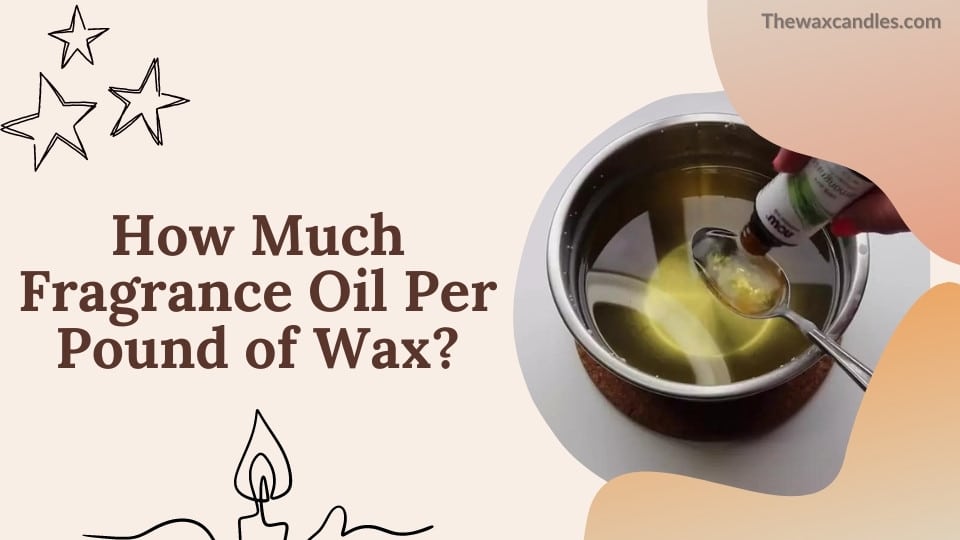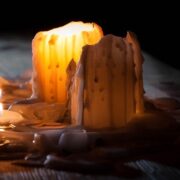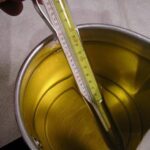
Not all candle manufacturers can boast natural ingredients and pleasant compositions of fragrances, and the candles are quite expensive. Fortunately, a simple and budget-friendly solution is to make scented candles at home.
Nowadays, a lot of people start candle businesses or do it as a hobby. The question of “how much fragrance oil per pound of wax should I add?” is frequently asked by beginners despite the straightforward technique. This page contains a comprehensive response to your inquiry.
| Type wax | Max Fragrance | Melt Point | Pour Temp |
|---|---|---|---|
| 464 Soy Wax | 1.6oz./lb or 10% | 113-119℉ | 135℉ |
| 444 Soy Wax | 1.6oz./lb or 10% | 119-125℉ | 135℉ |
| 415 Soy Wax | 1.6oz./lb or 10% | 121-125℉ | 95℉ (± 5℉) |
| 454 Coconut Soy Wax | 10% | 114-124°F | 170℉ (± 14℉) |
| Paraffin Container Wax (MP-117) | 1 oz./lb or 6% | 117℉ | 170℉ (± 5℉) |
| Paraffin Pillar Wax (MP-137) | 1 oz./lb or 6% | 135-140℉ | 180℉ (± 5℉) |
| IGI 4630 Harmony Blend Wax | 1.6oz./lb. or 10% | 119℉ | 170℉ (± 5℉) |
| IGI 4627 Comfort Blend Wax | 2oz./lb. or 12% | 125℉ | 180℉(± 5℉) |
| IGI 4625 Pillar and Votive Blend Wax | 1oz./lb. or 6% | 142℉ | 180℉ (± 5℉) |
How do You Calculate the Required Volume of Fragrance oil?
Step 1 — Pick a candle container.
The size of the candle container and how much wax fill it can accommodate will determine the ultimate volume. For example, if a candle weighs 6.35 ounces but its vessel is 10 ounces in capacity – that doesn’t mean you need to totally maximize usage with every ounce allocated!
Step 2 — Determine the percent of fragrance you want to use
To determine the perfect amount of oil, you’ll need to experiment and find what your preferences are. Let’s use 10% as an example for now.
Step 3 — Find out how much candle wax to use
Now that we have established our candle should weigh 6.35 ounces and hold a 10% aromatic load, let’s use the following equation to figure out how much candle wax is necessary:
Amount of wax = Volume of the vessel / (1 + Fragrance oil (%))
In this example, we are getting a wax quantity of 5.87 oz.
Step 4 — Find out the oil amount.
After ascertaining the weight of our candle and calculating the mass of wax we’ll be using, it’s a simple task to calculate how much oil is needed:
Amount of fragrance = Volume of the vessel – Amount of wax
Consequently, we determine that our candle will call for 0.48 oz. of oil to be used in its production.
Frequently Asked Questions
What happens if you use too much oil?
If we add too much oil, our candle may not burn properly. The flame may burn off extra oil that hasn’t been able to mix into the wax if your fragrance load is too high, producing a heavier-than-usual dark smoke.
It is important to note the temperature of the oil when it is added, since adding oil at too high a temperature can cause the wax to burn out or separate from its base.
What if I add too little oil?
It’s quite possible that as the candle burns, you won’t be able to smell the oil. The heat of the melted wax will cause some of the fragrance to simply burn off.
How much oil do I need for an 8 oz candle?
With the equations we discussed before, let’s suppose we desire to mix 10% oil into our candle. To start, it is essential to figure out the weight of wax first.
Wax amount = 8 oz / (1+10%) = 8 / 1,1 = 7,2 oz.
And now, we need to use another formula to find the oil amount.
Fragrance amount = 8 oz – 7.2 oz = 0.8 oz
So, on an 8 oz candle, we need 0,8 oz of oil.
Does fragrance oil brand matter?
Essential oil production varies among manufacturers, some of whom attempt to maximize quality and natural characteristics at a lower price.
Others produce the oil using exclusive recipes and specific suppliers with an eye towards professional use in therapy or aromatherapy.
Ultimately, the oil you select is up to your discretion. Still, it’s recommended that you opt for natural oils as they have been trustfully utilized over time and are safe for consumption.
What are phthalates in fragrances?
Phthalates are phthalic acid salts and esters that are used to add softness and elasticity to plastics and cosmetics. They are incredibly cheap, so producers use them in massive amounts to reduce the price of a product.
For good reason, phthalates are classified as hazardous chemicals. They build up in the body and are extremely harmful to your health. Phthalates can occasionally be identified by the marking as the letter “V” or the abbreviation “PVC.” However, manufacturers frequently omit to list the ingredients and cover up dangerous ingredients with the word “fragrance.”
The majority of phthalates are found in synthetic oils.
What is an oil flashpoint?
Knowing the flashpoint is an essential element of candle-making, particularly for those who make gel candles. At this temperature, scented oils become highly susceptible to fire and combustion when exposed to a flame.
These manufacturers must be well aware of their product’s flashpoint in order to create safe products that last.
When making candles, there are certain fragranced oils that require a flashpoint of 170°C or higher. Furthermore, the candle scented oil’s flashpoint can determine whether it needs to be shipped by airmail or if ground shipping is possible.
Despite certain fragrant oils having a lower flashpoint, they are still safe to use in molten wax provided that it does not come into contact with sparks or an open flame.
Wax heated up to 185°C is impervious when aromatic oil of a lesser flashpoint is added – providing you the peace of mind knowing your projects will be secure and scent-filled!
What about chemicals in fragrance oils?
Some dishonest producers do add harmful chemicals to their oils. You can use any fragrance oil that is worthwhile by looking for one that has an IFRA certificate from the International Fragrance Association. Finding brands with all the required certifications is simple online.
If you cannot determine the origin and composition of the oils, do not order them. If at all possible, stick to reputable brands.
Carole Brooks has been making candles for many years. She loves to create candles of all different types and for all different purposes. Here she shares her experience and knowledge. Carole is a graduate of Texas A&M University.






